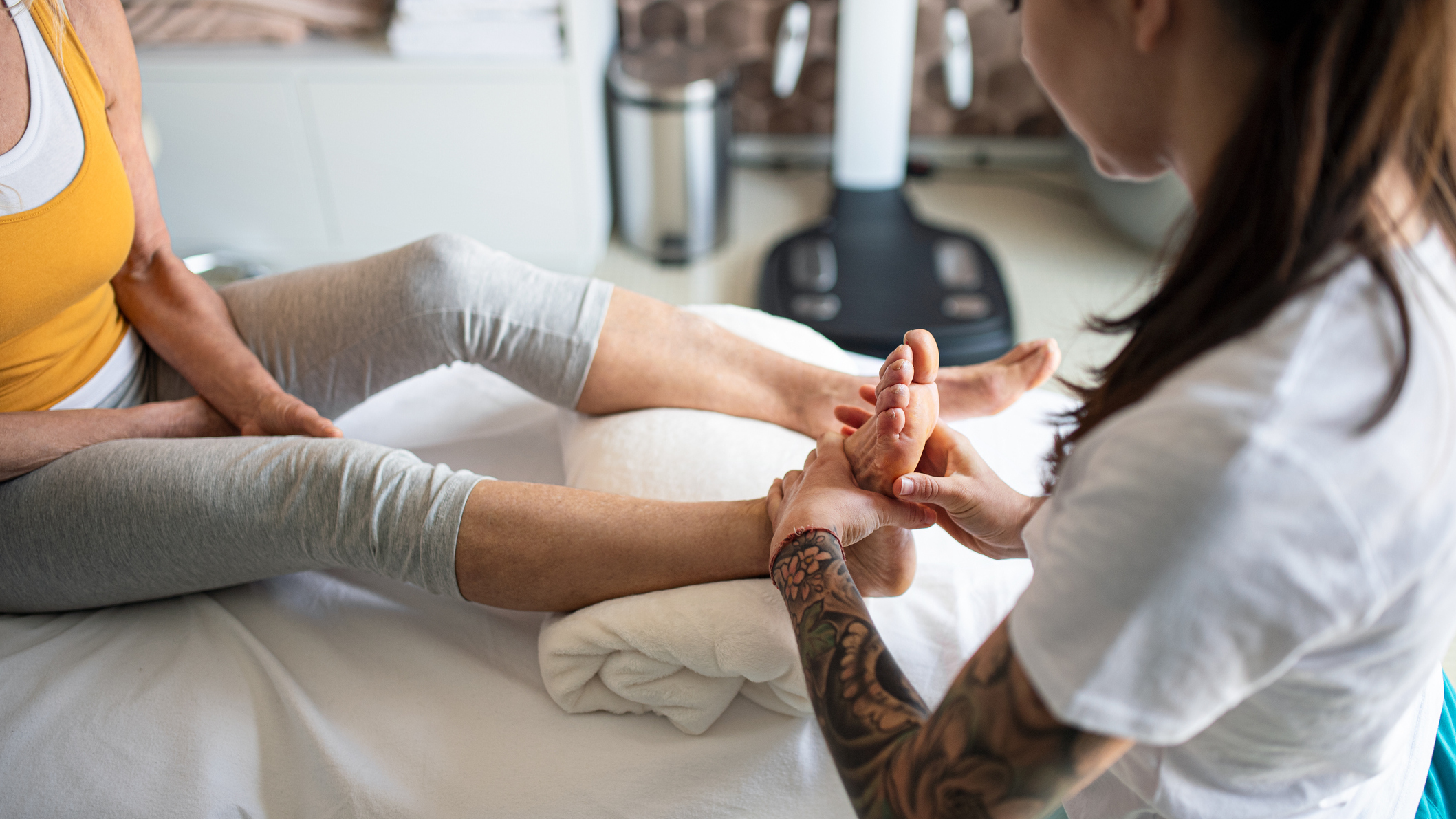Tapering For A Marathon Explained
How to nail the last few weeks of marathon training and set yourself up for a great race

The spring marathon season is upon us, and hopefully this will be more exciting than frightening if you’re running one. You’ve logged the majority of your marathon training already, and three or four weeks out from the race it’s time to begin your marathon taper, a gradual reduction of training volume so you begin the race fresh.
If this is your first marathon you might assume tapering simply involves chilling out for a few weeks, but it’s possible to get tapering for a marathon wrong and knock yourself off your stride for race day. Don’t underestimate how sluggish the body can feel when you start reducing your running after following a consistent training plan to the letter—and right now the last thing you want to feel is sluggish.
To ensure that doesn’t happen, we asked Nick Anderson of coaching company Running with Us, who was the Cancer Research UK coach for the London Marathon when we spoke to him in 2019, for the lowdown on tapering and his top tips.
What is a marathon taper?
“Tapering is when you reduce the volume and intensity of runs in your marathon training to allow your body to adapt and recover, and crucially to be fresh and ready enough to run the marathon itself,” says Anderson. “The biggest difference when tapering is the reduction in your long run, which starts about three to four weeks before the race—at that point consider cutting your long run back to a maximum of 2½ hours. At two weeks cut it to two hours, and at one week do a relaxed 75-minute run.”
Now you know the fundamentals, here’s how to nail the finer points.
Maintain Your Running Routine
You still need to run during a taper or you’ll start to feel sluggish, so keep following your training plan closely.
“So that you don’t feel rusty during your taper, keep the frequency of your training the same,” says Anderson. “If you normally run three, four or five times a week, keep this up, but consider getting some faster sessions in to get a bit of zip back into the legs. A local 5K parkrun blast could be perfect for this.”
Don’t Ignore Injuries
“Niggles and sickness can still strike during your taper and the desire to run through this can see many runners undo all their hard work,” says Anderson. “If you are sick or carrying a niggle take extra rest or consider cross-training like aqua jogging, spinning or the elliptical.”
Sign up for workout ideas, training advice, reviews of the latest gear and more.
Stay Positive
Write down eight to 10 positive statements about what you have achieved
The taper period is when “maranoia” first starts to set in. This happens to all runners, no matter how many marathons they’ve done, so follow this excellent tip from Anderson to make it clear to yourself how well you have trained for the event.
“‘Should I squeeze in another three-hour run?’ ‘Do I need to make up for that week I missed when I had a cold?’ These are common worries in the final weeks,” says Anderson. “Look back over your training diary and write down eight to 10 positive statements about what you have achieved so far, reinforcing the positives.”
Book A Check-Up

“If you were entering a car race you’d definitely want to make sure everything was running smoothly,” says Anderson. “Your body is no different. Book in with a good local sports physio or consider getting a sports massage in the final two weeks. However, don’t book a massage closer to the event than the Wednesday of race week, because sometimes these can leave you feeling a little sore.”
Clear Your Diary
“The taper is all about doing less, not more,” says Anderson. “Just because you have more time because you’re not training, that doesn’t mean it’s time for more gym classes or DIY jobs at home. Be a bit selfish and ask for help with jobs around the house. If you can, take a day off work on the Friday before the race and use it to do nothing!”
Hit The Hay
If your sleep routine is a little sloppy, this is the time to clean it up.
“An extra 15-30 minutes of sleep a night in these final two to three weeks could make a massive difference to your final performance,” says Anderson. “Banish smartphones and tablets from the bedroom, avoid stimulants such as caffeine or alcohol late at night, and eat your main evening meal a little earlier—ideally two hours or more before you sleep.”
Bonus Tips
Ease Back On Your Strength Work
If you’ve been doing supportive strength training alongside your running (and you’ve definitely been doing that, right?) you need to gradually reduce your workload there too, as we discovered when we asked Fiit trainer Sean Kazab about the fundamentals of strength training for runners.
“Your strength training should taper off,” says Kazab. “In those last few weeks, the number of sets should drop. You’re looking to only maintain your strength.” You don’t need some gym-induced DOMS plaguing your legs as you prep for your race.
Plan Ahead
As your long runs get progressively shorter, it’s good to keep busy so here are two ways to fill your time productively. First, plan what you are going to eat in the final few days before the marathon, because consuming sufficient carbohydrates to bolster your muscles’s store of glycogen is not as easy as eating a second helping of pasta the night before the race. As you’ll find in our guide to how to carb-load, a 70kg person should look to eat 2,800 calories of carbs in each of the final two days before an event, all the while maintaining their normal intake of protein and vegetables.
Second, work out your pacing strategy and read this advice from elite runners on how to pace a marathon, including what to do if you realize you’ve gone out too fast. It’s all the more valuable if you’ve aced your marathon taper, because if you’re raring to go it’s easy to start too fast.

Nick Harris-Fry is a journalist who has been covering health and fitness since 2015. Nick is an avid runner, covering 70-110km a week, which gives him ample opportunity to test a wide range of running shoes and running gear. He is also the chief tester for fitness trackers and running watches, treadmills and exercise bikes, and workout headphones.
